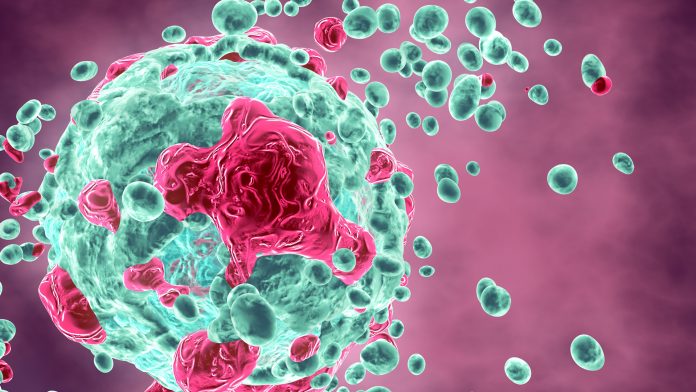According to a new study led by University College London, UK, heating cancer cells whilst they undergo chemotherapy is a highly effective method of killing them.
The study, published in the Journal of Materials Chemistry B, suggests that delivering chemotherapy drugs using specialist magnetic particles is up to 34% more effective at destroying the cancer cells than traditional chemotherapy treatment.
The magnetic iron oxide nanoparticles that carry the chemotherapy drug shed heat when exposed to an alternating magnetic field. Once the nanoparticles have accumulated in the tumour area, an alternating magnetic field can be applied from outside the body, allowing heat and chemotherapy to be delivered simultaneously.
In the study, researchers combined the magnetic nanoparticles with a commonly used chemotherapy drug, doxorubicin, and compared the effects of this composite in various scenarios on human breast cancer cells, glioblastoma (brain cancer) cells, and mouse prostate cancer cells.
Senior author Professor Nguyen T K Thanh, from University College London, said: “Our study shows the enormous potential of combining chemotherapy with heat treatment delivered via magnetic nanoparticles. While this combination of therapy is already approved for the treatment of fast-growing glioblastomas, our results suggest it has potential to be used more widely as a broad anti-cancer therapy.
“This therapy also has potential to reduce the side effects of chemotherapy, by ensuring it is more highly targeted on cancer cells rather than healthy tissue. This needs to be explored in further pre-clinical tests.”
Thanh’s findings
In the most successful experiment, the team found that the combination of heat and doxorubicin together killed 98% of brain cancer cells after 48 hours, when doxorubicin without heat killed 73%. Meanwhile, for the breast cancer cells, 89% were killed by heat and doxorubicin together, while 77% were killed after 48 hours by doxorubicin alone.
Cancer cells are more susceptible to heat than healthy cells – they undergo a slow death (apoptosis) once the temperature reaches 42 degrees Celsius, whereas healthy cells are able to withstand temperatures up to 45 degrees Celsius.
The researchers found that heating cancer cells by only a few degrees enhanced the effectiveness of the chemotherapy, meaning the treatment could be effective with lower doses of nanoparticles.
They found the combination of therapies was most effective when the nanoparticles were absorbed, or internalised, by the cancer cells, but they found the chemotherapy was also enhanced when the nanoparticles shed heat while remaining outside the cancer cells (which would be an easier form of treatment to deliver). However, the effects at lower temperatures only occurred when the iron oxide nanoparticles were internalised or tightly deposited on to the surface of the cancer cells.









